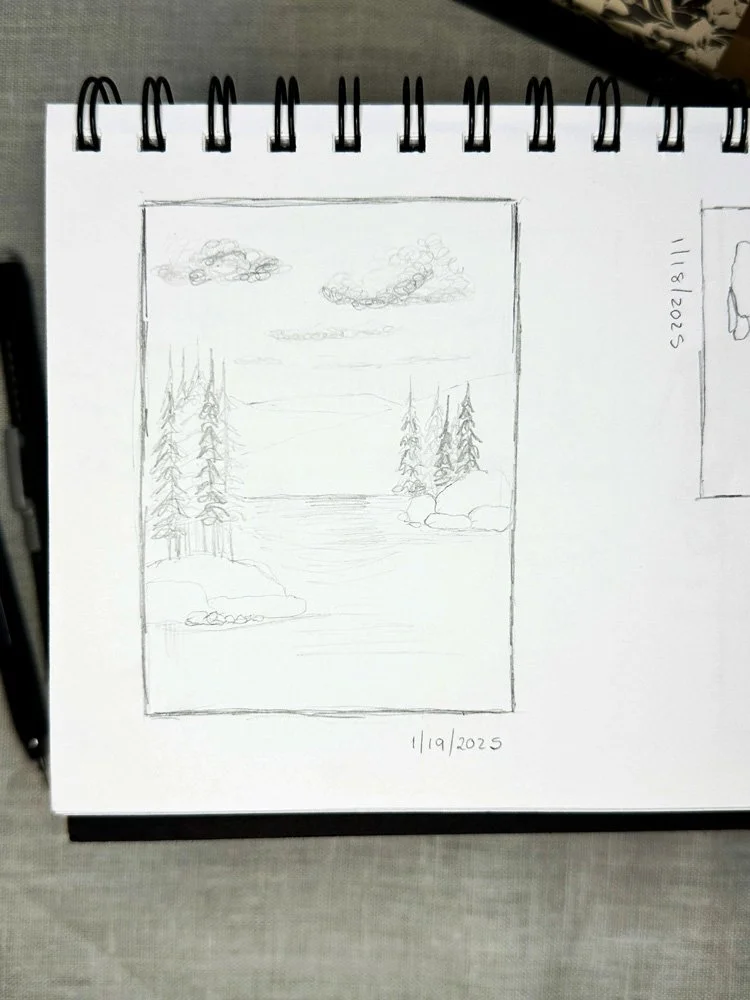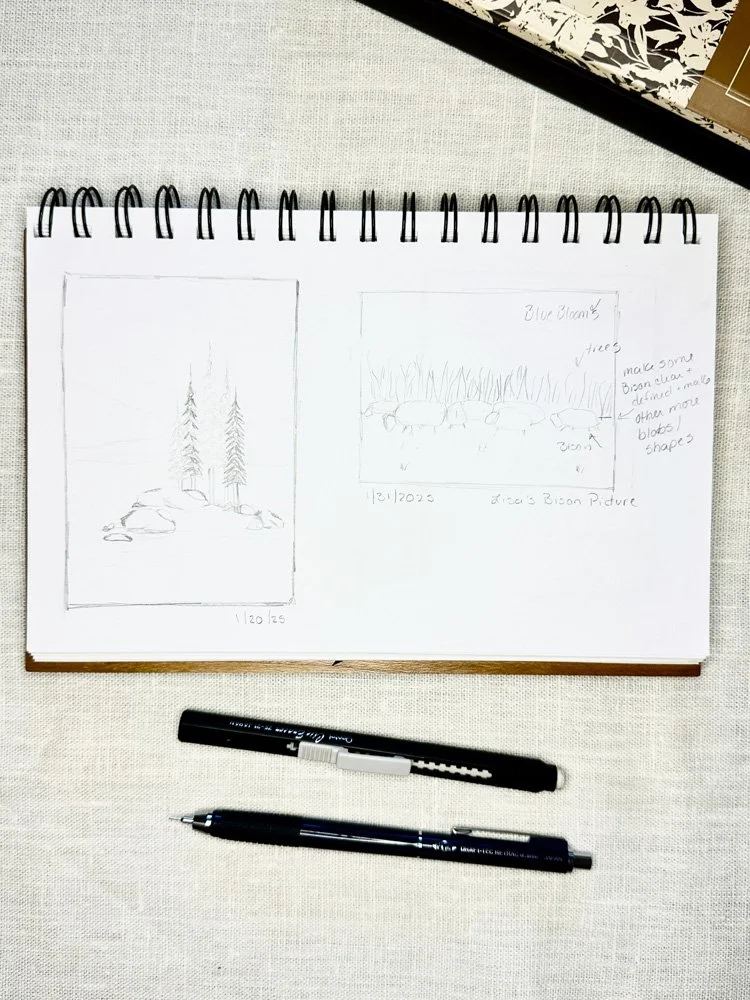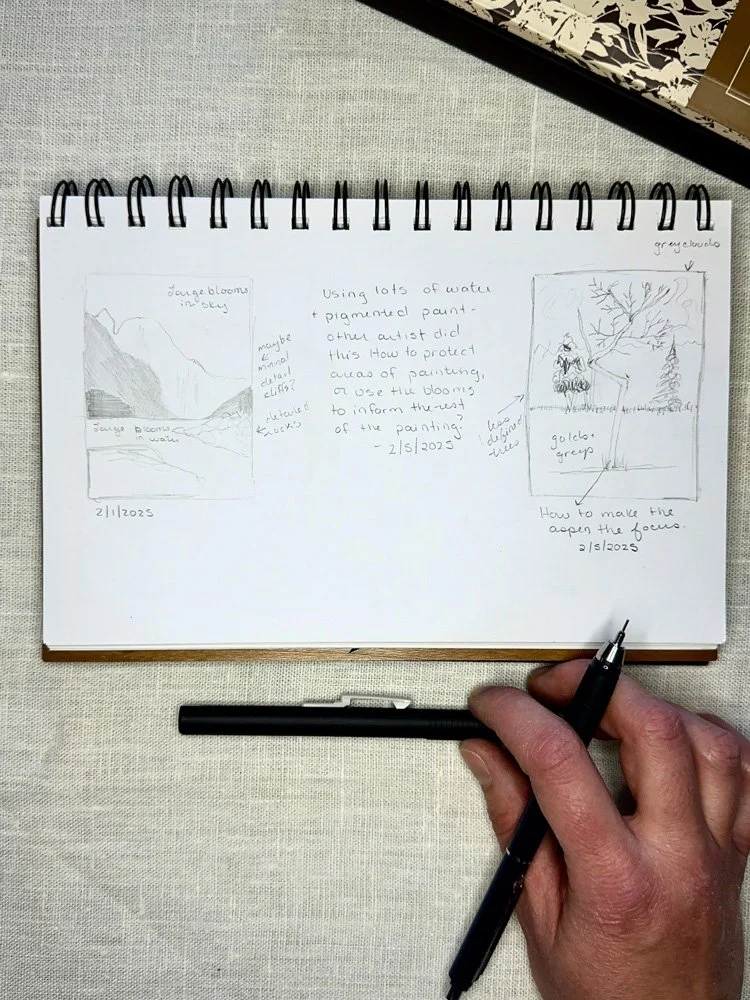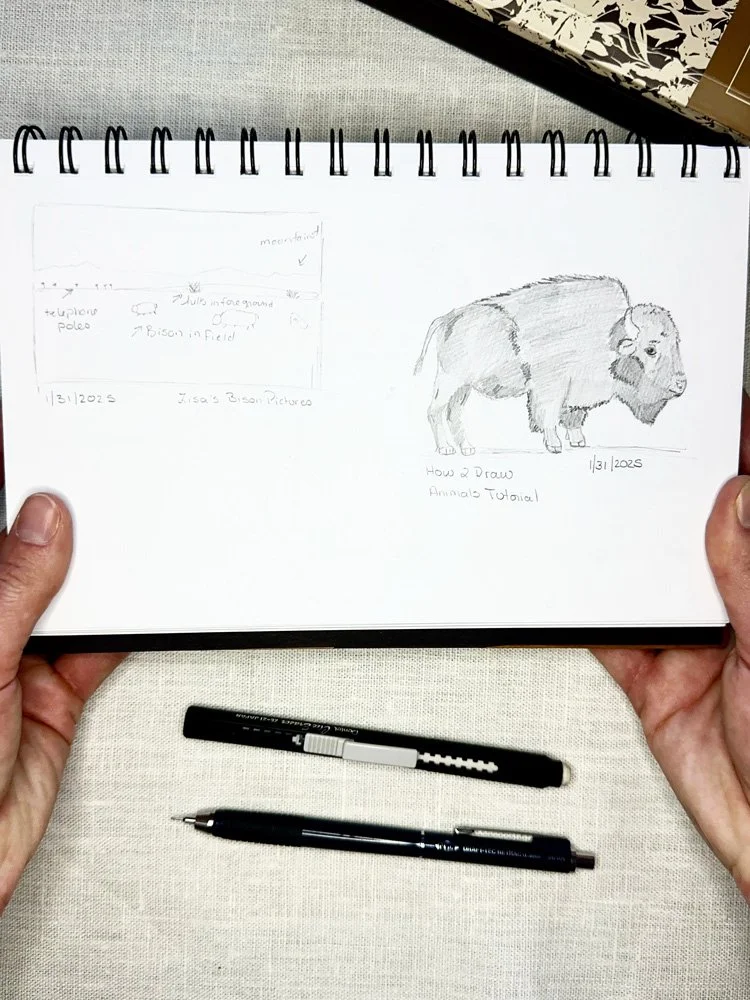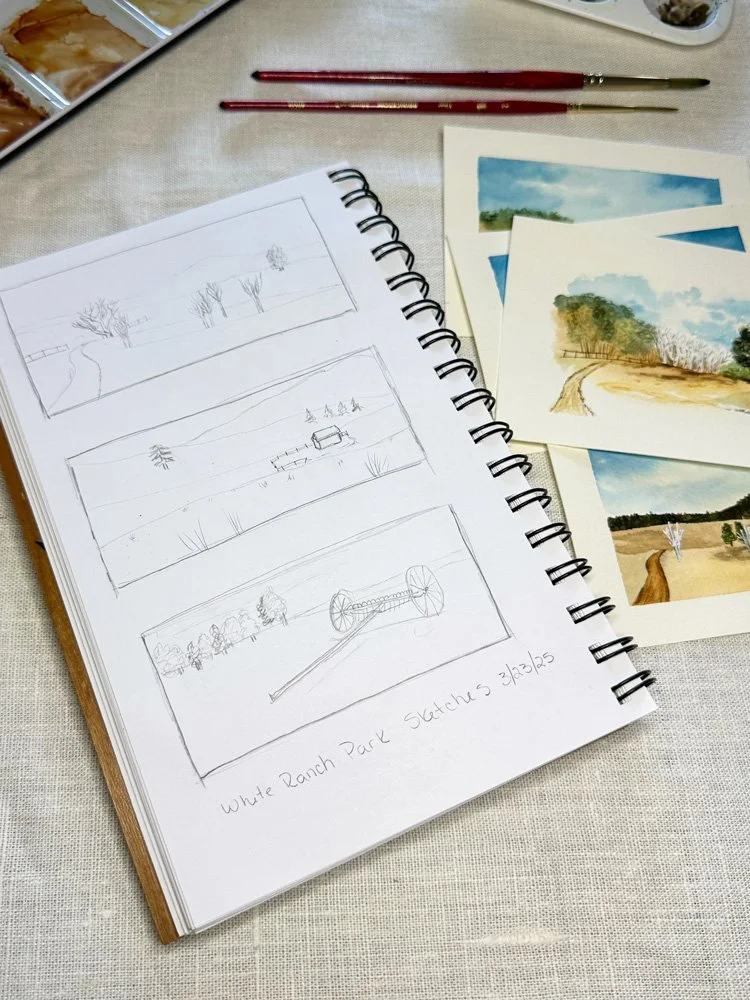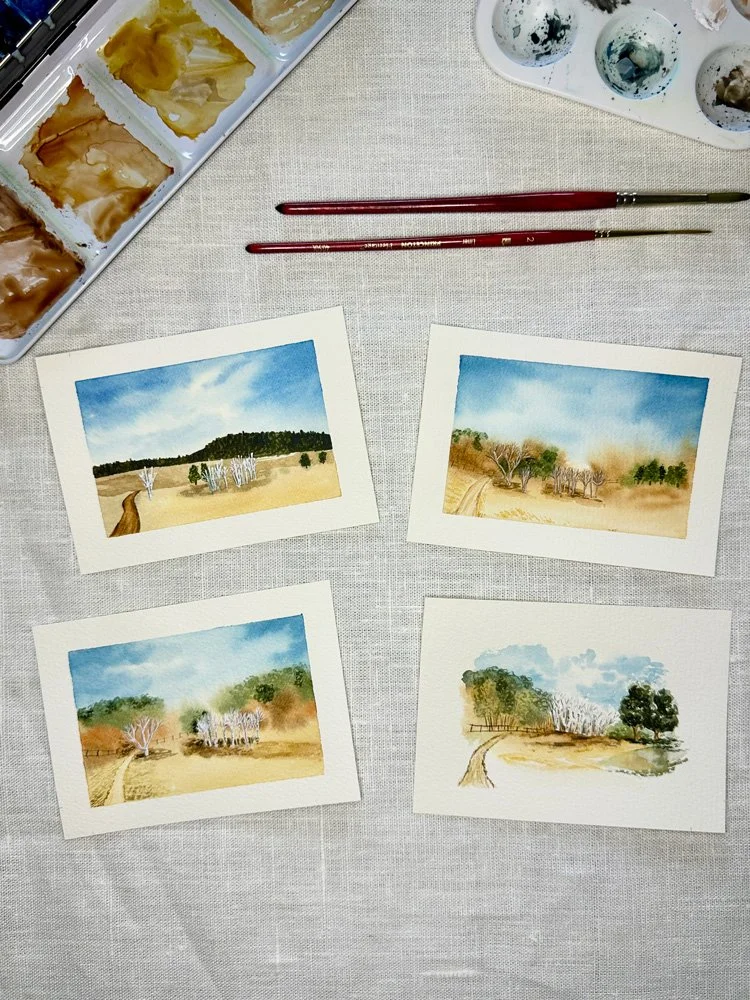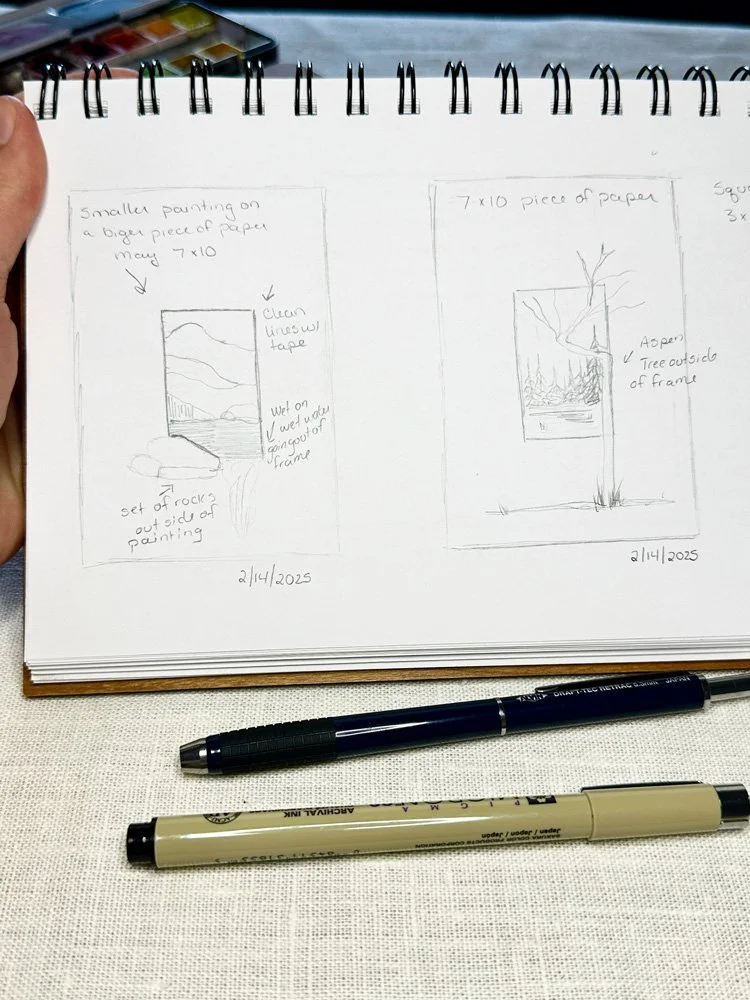From Sketch to Painting: How I’m Using My Sketchbook to Plan
How do you feel about a brand new sketchbook or notebook? Are you the type that loves cracking open a new book and getting started? Or do you stare at the blank page not knowing where to start? When it comes to drawing or watercolor, I have often struggled with sketchbooks. In 2025, I have started using my drawing sketchbook more consistently not for finished drawings, but to capture ideas and inspiration to use later on. This concept first showed up in my sketchbook in September 2024, when I used my sketchbook to capture some more experimental ideas that I was thinking about exploring in watercolor. I made these small thumbnail sketches in pen and it probably took 5-10 minutes to capture the four different ideas. Then those sketches sat there for a few weeks as I mulled them over. After a bit of time and space, I was ready to start painting, and these sketches turned into my first series of deconstructed/ abstract landscapes. (You can learn more about those paintings in the blog post Experimenting with Abstract Landscapes.)
As I started working on my 100 Day project at the start of the year, one of my favorite aspects of the project was being able to work quickly and to literally go with the flow because I could not erase. (More on that project here.) Creating a mini every day showed me how much I could capture in a short period of time and that you do not have to have a perfectly finished painting or drawing to “feel productive.” Almost without noticing it, I found myself grabbing my drawing sketchbook when I wanted to capture a half-baked idea onto paper. These sketches were often quick, completed in pencil with few adjustments, and often I would find myself capturing more than one version of the same idea.
Sometimes these drawings are simply a sketch, where I am working out the elements of the composition. There might be some shading, but the point is to capture the basics: orientation, key elements, proportions.
Sometimes the drawing is even simpler and I am giving myself notes for what I want to accomplish in the finished painting. I might include where I want aspects of the painting to be looser using a wet on wet technique or where I want to make sure there are sharper details. I might even include those elements that I do not want to forget about for the finished painting such as tiny telephone poles in the distance, which I might forget as I am painting.
Sometimes, I use it to record the colors that I want to have the most prominence in the final composition, which can change how I progress through the painting working from light to dark or which color palette I decide to use (I have two palettes I often switch back and forth between).
Occasionally, I have used it for tutorials. When I was working on a bison series, I took an online drawing tutorial on how to sketch a bison to help with the final painting. This tutorial was on youtube from How2DrawAnimals.
Looking for more behind the scenes content? Follow me on Instagram to see what I’m up to on a daily basis and for a first look at new work. Looking for a more personal touch? Sign up for my newsletter and never miss a post.
Many of my sketches turn into final paintings. Sometimes, I am eager to get to painting and there might be only a day or two in between when I create a sketch and when I actually start painting.
More often than not though, sketches can sit in my sketchbook for weeks before I get the urge to paint them. In the above images, I am playing with the idea of space and composition. I like the idea of pulling out a specific element of a landscape painting, such as the rocks along an alpine lake or a solitary aspen in a sea of pine trees and having it almost outside the main composition. To me this feels like you are looking through a window. Even though I have not started on any of these three paintings, I have not given up on them yet. I feel like the ideas are not fully formed and that at some point I will suddenly be ready to work on them all at the same time.
A very new way that I am using my drawing sketchbook is to capture ideas for products and patterns. Patterns and products are such a different way of thinking from my painting process. When I am painting, I am going with the flow, I am seeing what the watercolor is going to do, and when I am finished I have a complete painting. Patterns and products are more about mark making and creating individual motifs or designs. Often I am capturing ideas that I do not have the skills to execute yet.
In January, I captured a series of ideas for climbing-themed Valentine’s Day Cards. I sketched out a series of ideas confident (at the time of sketching) that this could be a fun set to put together in advance of the holiday. Little did I know how long it would take to go from sketching to working in Adobe Illustrator to actually having a digital download for Etsy. But I learned a lot and it taught me that just because I do not know exactly how to execute an idea yet, that I can capture all the ideas that I have in my sketchbook to use later when I do.
Working in my sketchbooks is not always easy. It is an area of my creative practice that goes in fits and starts, but I am learning that there is not one right way to work in your sketchbooks or to be creative. Currently I am not that person where my sketchbook is a work of art on its own, and that’s ok. I’m focusing on enjoying the process and seeing how my sketchbook process continues to evolve.
Do you work in sketchbooks? How are they a part of your creative practice?


